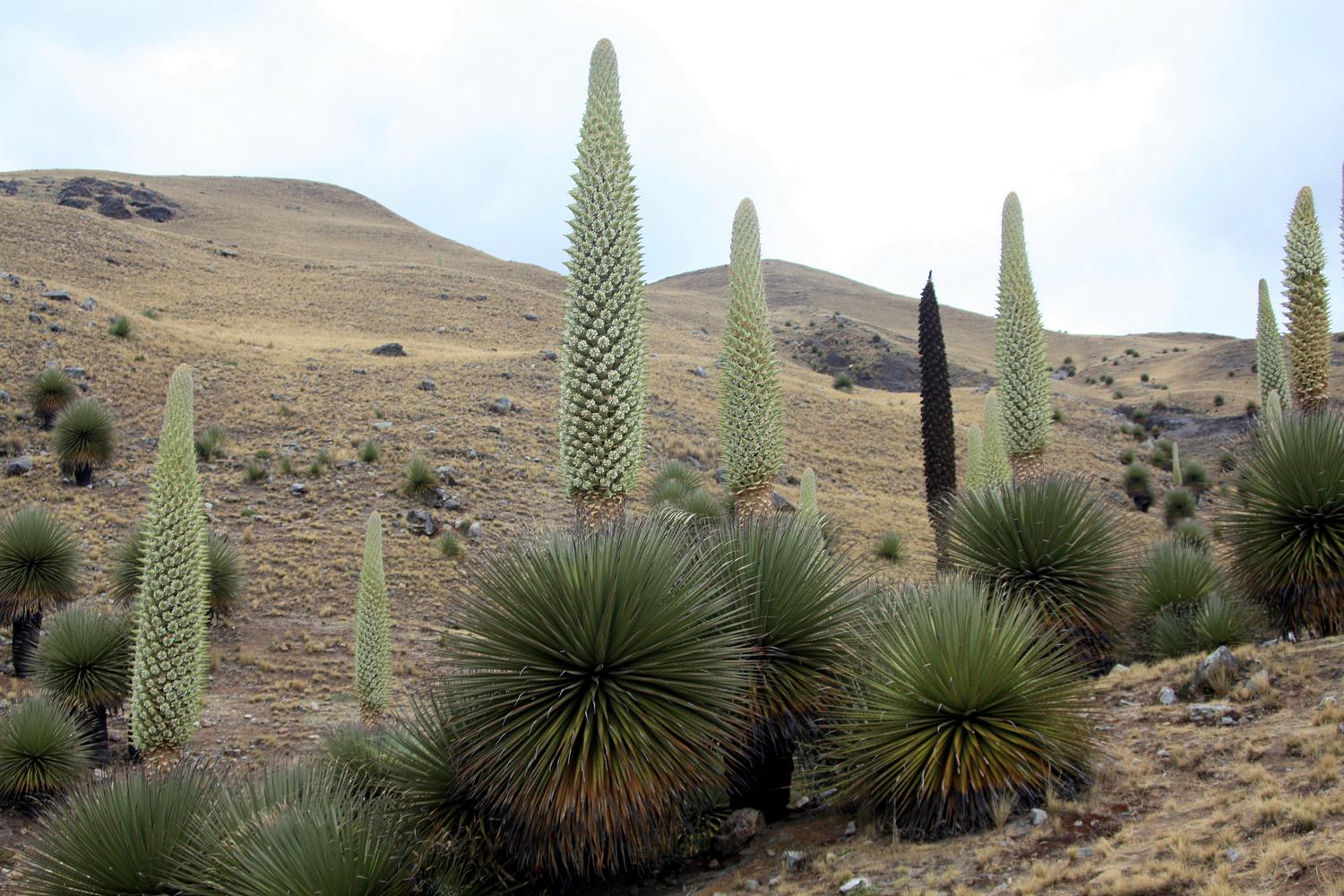
Ready to experience the wonders of Peru? Get in touch, and we’ll help you plan the adventure of a lifetime!

Ready to experience the wonders of Peru? Get in touch, and we’ll help you plan the adventure of a lifetime!

Email Consent Notice
By checking the box, you consent to PeruVisit.com collecting and processing your email address for the purpose of sending newsletters, promotional offers, and information about tours in Peru.
You acknowledge and understand that:
For full details on how we manage personal data, please refer to our Privacy Policy.
Existing today as a rare and colossal giant, this botanical wonder thrives in the untouched landscapes of Peru and Bolivia's protected realms. Imagine stumbling upon its colossal floral spires, reaching heights exceeding 32.8 feet (10 meters) and spanning an awe-inspiring diameter of 8.2 feet (2.5 meters). With these monumental proportions, the Puya Raimondii proudly claims its title as the plant with the world's largest inflorescence, a botanical spectacle that leaves even the most seasoned botanists in awe – boasting an incredible multitude of up to ten thousand simple flowers on a single spike. Hail to the intrepid botanists who dared to count them all!

The saga of the Puya Raimondii unfolds over a lifetime of patient vigor, as this botanical giant channels its strength into crafting a truly magnificent inflorescence. And what a life it leads – a lengthy one at that. On average, the Puya enters its "maturity" around the age of 50. Yet, tales abound of exceptional specimens that only begin to blossom at a staggering 150 years old. This remarkable plant, with the world's largest inflorescence, keeps its secrets well-guarded, unleashing a breathtaking spectacle after decades of anticipation.
But how does it achieve such grandiosity? The Puya Raimondii entrusts its destiny to the whims of airborne bats and sizable insects for pollination, adding another layer of mystique to its narrative.


A somber note accompanies the grandeur of the Puya Raimondii – right after its colossal flower fades and the seeds ripen, the above-ground part of the plant withers away. Perhaps it is this poignant lifecycle that contributes to the rarity of the Puya Raimondii today. In the wild, encountering this botanical giant is a rare privilege, with a mere occurrence of approximately one plant per square kilometer of its habitat. Presently, the population of these towering spires amounts to no more than a few hundred thousand individuals. Astonishingly, in prehistoric times, these colossal inflorescences once graced the Andean landscapes ubiquitously. The echoes of a bygone era, where the Puya Raimondii flourished abundantly, linger in the wind, leaving us to contemplate the delicate balance between rarity and the ephemerality of nature's wonders.

Speaking of prehistoric times, as seed-bearing plants embarked on their triumphant conquest of the planet, those that stood larger in stature seemed to dominate the early scene. It's as if nature, in its ambitious sculptor phase, initially crafted grand masterpieces. The Puya Raimondii stands as a vestige of those ancient epochs, a fragment of bygone eras. Hence, botanists often refer to it as the dinosaur among plants.
Yet, the life of the "dinosaurs" nowadays isn't all that cheerful. Today, our Puya thrives only in three locations in Peru (Ankash, Cahamarquilla, and Catac) and the Bolivian Comanche mountains, within a national park specifically created for its preservation. In 1963, the President of Bolivia made it clear in a decree that the Comanche mountain plants are true prehistoric rarities, deserving careful conservation.
The guardianship of the Puya Raimondii takes various forms – from artificial pollination to planting young specimens nationwide for greening initiatives, and cultivation in botanical gardens. Scientists hold onto hope that these efforts will bear fruit, rescuing this remarkable "dinosaur" from the brink of extinction.

Get in touch, and we’ll help you plan the adventure of a lifetime!